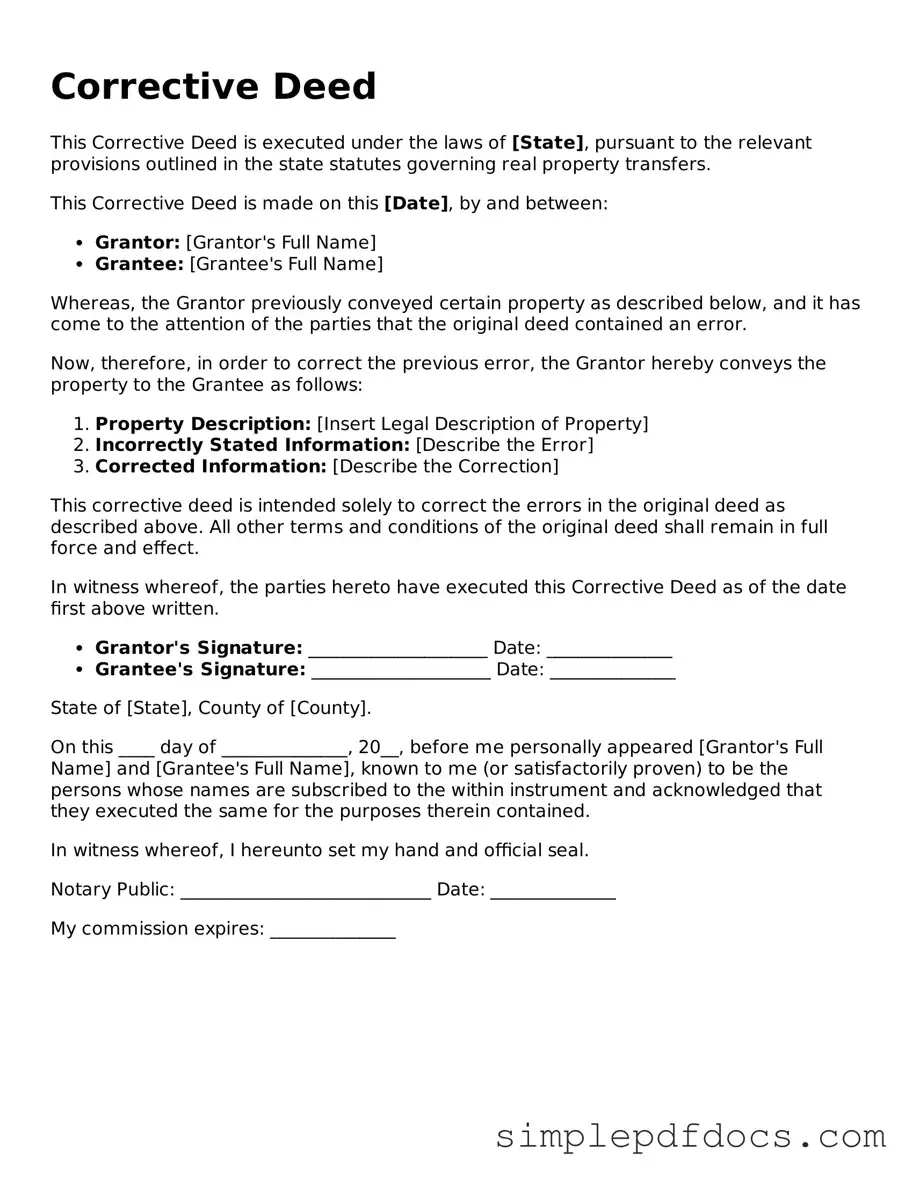The Corrective Deed form serves a vital purpose in the realm of real estate transactions, addressing errors or omissions that may have occurred in a previously executed deed. This form is particularly important when there are discrepancies in the property description, the names of the parties involved, or any other critical details that could impact ownership rights or property title. By utilizing a Corrective Deed, property owners can rectify these issues, ensuring that the public record accurately reflects the true intent of the parties at the time of the original deed's execution. This process not only helps to prevent potential legal disputes in the future but also provides peace of mind to all parties involved. It is essential to understand that while the Corrective Deed does not transfer ownership, it clarifies and corrects the existing deed, thereby reinforcing the validity of the property title. Properly executed, this form can safeguard against misunderstandings and protect the interests of current and future property owners.
